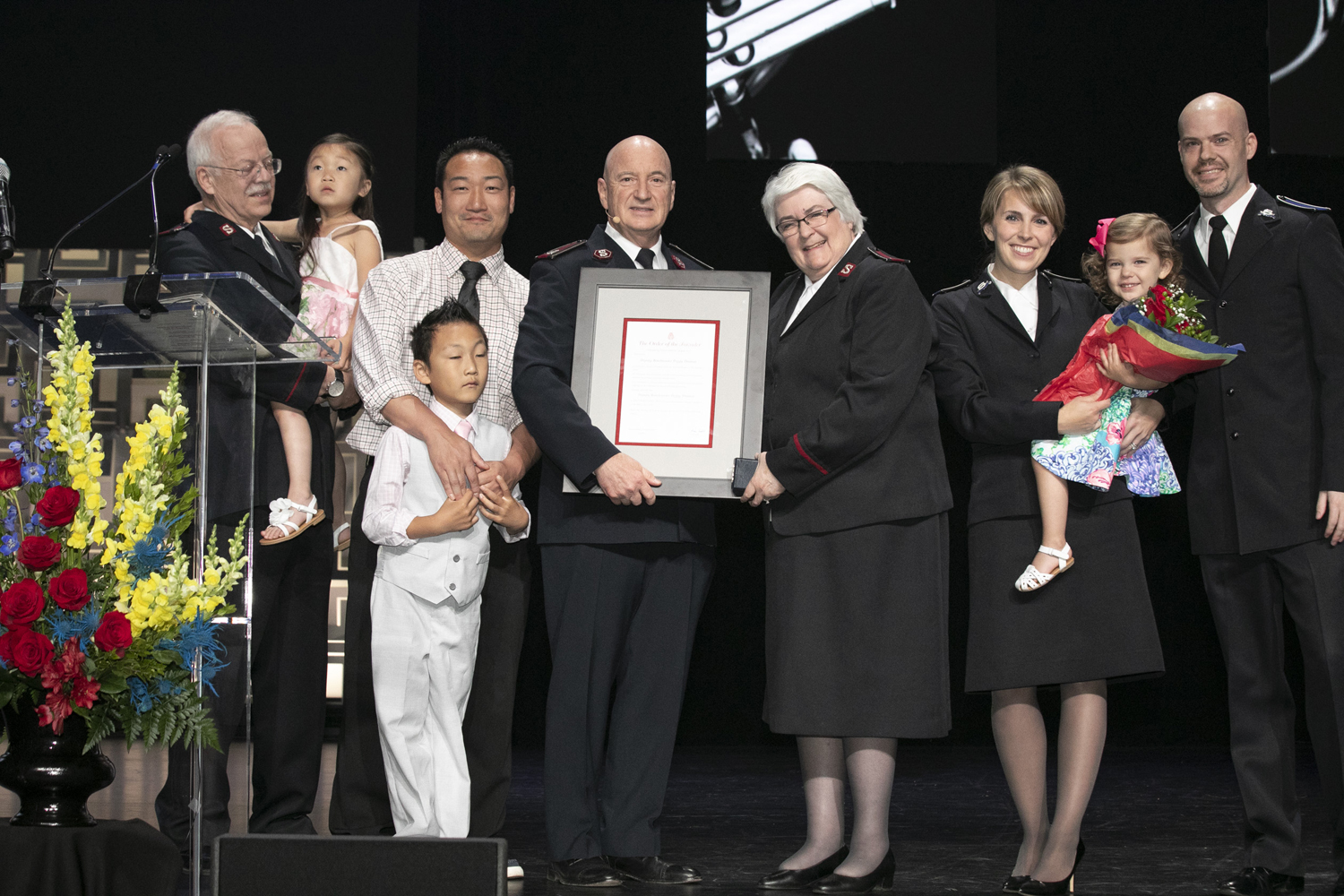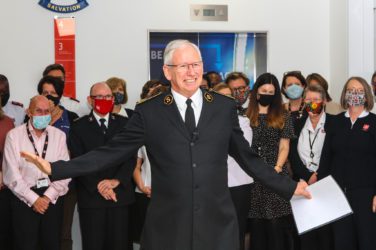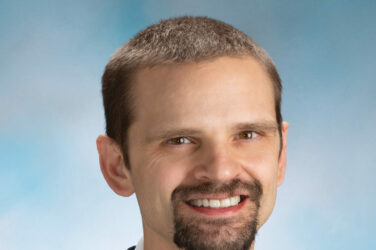Saluting Peggy Thomas, our territory’s latest Order of the Founder (O.F.) recipient
by William Himes, O.F.
This year marks the 40th and final year of Peggy Thomas’ career as assistant territorial music and creative arts ministries secretary. As the one who brought her onto the team and worked with her for most of that time, it’s not easy to sum up her contributions, but some contrasting descriptions come to mind: innovative and thoughtful; passionate and quiet; determined and humble.
Breaking Barriers
In 1976 Peggy created quite a stir when she auditioned and gained a chair in the solo cornet section of the Chicago Staff Band (CSB). She was the first woman in The Salvation Army admitted into a staff band. It might be hard to believe this was an issue in the latter part of the 20th century, but fortunately for women in all staff bands today, Peggy was determined to break this barrier.
When she was 12, after hearing the CSB at commissioning, she said to her father, Colonel John Paton, “I want to be in that band someday.”
“But Peggy, there are no girls in the staff band,” he replied.
She hadn’t noticed. True to character, she asked, “Why not? If a woman can be General of The Salvation Army, then why can’t they play in a staff band?” She proceeded to announce one day she’d be a member of the CSB.
Following graduation with a performance degree from the Eastman School of Music, Peggy returned to Chicago to continue graduate studies at Northwestern University. Asking to apply for membership in the CSB, she was told, “You don’t apply; you are invited.”
Not seeing any invitations coming her way, she created her own application and submitted it to the band board. On March 1, 1976, after consultations that went all the way to the Chief of the Staff at International Headquarters, she was appointed to the band and soon became principal solo cornet.
Taking the Lead
In 1982 Peggy was appointed CSB deputy bandmaster and in 1984 was commissioned as bandmaster of the Norridge Citadel, Ill., Band which she led for 35 years.
Under her leadership, the Norridge band explored program innovations which today are routine, including reinforcing music with synchronized video, using secular music to cross over into a spiritual context, and adding full rhythm section (keyboard, guitar, bass, drum kit) to contemporary repertoire. She led the band in successful tours of the U.S., the United Kingdom and Canada and produced dozens of recordings, including the first CD produced in the territory.
Discovering her Destiny
Although Peggy trained to be a professional musician with the goal of playing in an orchestra trumpet section, God had other plans. In 1979 she joined the fledgling territorial music department as its third employee.
The job provided diverse opportunities including the production of OPUS, a monthly newsletter to the corps music leaders. Her summer schedules were filled teaching young people at divisional and territorial music camps. She proved to be a fine conductor who related to young people with an infectious balance of challenge and encouragement.
While she rarely shows emotion, when she reflected on the hundreds of young musicians in Central Music Institute’s Wonderland Band that she led for years, her eyes welled up and her voice trembled as she said, “From the first fearful reading of a difficult piece to its triumphant conclusion in the final program, it is always amazing to see how these kids rise to the challenge and give an inspired performance.”
Focusing on Intentional Worship
Peggy’s personal mission extends far beyond her musical leadership. “When I started working in the music department, I soon realized that I had talents and gifts that fit my new job,” she recalled. “In those days our main focus was supporting our musical groups with resources, seminars and events, but over the years we evolved and expanded our focus to include a wide range of worship arts.”
After attending a worship arts conference sponsored by a megachurch, Peggy came away inspired by the innovative principles and ideas that could be adapted and used in corps’ Sunday worship. It was not about being trendy or entertaining but rather intentional and life-changing.
“Everything points to Sunday” became the department’s credo. Worship was the filter through which all efforts passed. How can our music groups be more effective in worship? How can our music better relate to our congregations? Are there new directions in songs and musical idioms that can help us be more relevant?
“As we challenged ourselves with these questions, the answers resulted in the creation of a variety of resources designed to encourage deeper worship including thematic worship series, devotional materials and, of course, music,” Peggy observed.
Singing a New Song
Since 1992 Peggy has served as the project manager for Hallelujah Choruses, a collection of congregational accompaniments featuring current praise and worship songs and choruses along with older hymns and songs that have been rejuvenated and arranged in a contemporary style.
Hallelujah Choruses is published in a variety of formats which can be used with keyboard, and/or praise band rhythm section, and/or brass ensemble from five players to full band. With 280 arrangements and all songs including English and Spanish translations, this resource is now used every week in corps throughout the world.
Lifting a Concert of Prayer
In 1997 Peggy read Jim Cymbala’s book Fresh Wind, Fresh Fire, an inspiring chronicle of a dwindling congregation that grew exponentially in a gang-infested urban wasteland in Brooklyn, N.Y. She gave the book to Commissioner Harold Hinson, then territorial commander, who promptly put a copy in the hands of every officer!
But Peggy didn’t stop there. She crafted a nine-week worship series titled, “Concert of Prayer: How to Bring an Army to its Knees.” Published in notebook form, this resource included meeting outlines with suggested songs, scripture passages and other readings, drama vignettes and sermon outlines. The objective was to reduce research time for corps leaders while providing an abundance of inspiring content that could be adapted.
When it was released to every corps in 1998, the response was so positive it quickly began to be used in all North American territories and necessitated Peggy spending a greater portion of her time developing Advent/Lent materials and other thematic worship series annually.
“I am especially grateful to my corps for their willingness to be a lab over the years prior to releasing these series to the territory,” she said.
Having worked closely with Peggy for 36 years, I could be biased. But Lt. Colonel Philip Maxwell, territorial program secretary, shared this assessment, “By far the most appropriate label that can be attributed to Peggy Thomas is ‘Servant of God.’ Her life has been marked by obedience with grace, humility, consistency and a determination to offer her very best.”





